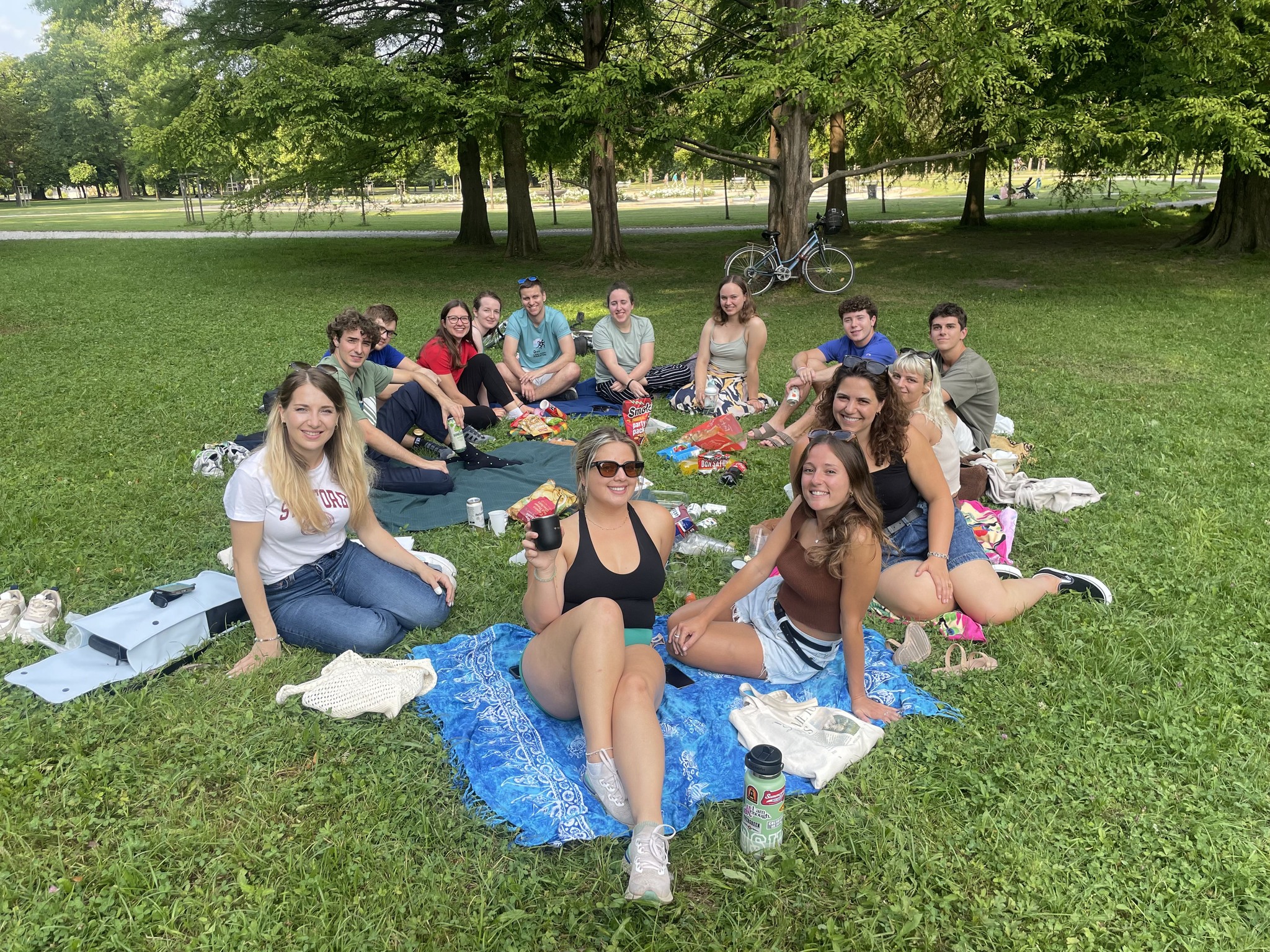
ASEF Junior Fellow Magdalena Eciolaza’s Research Visit and Love for Nature
We are beyond proud that our ASEF Visit Slovenia Junior Fellow, Magdalena Eciolaza, of the 2025 generation, has also completed her research visit in Slovenia. Magdalena is a student of Biology (Bachelor/Master) at the National University of Mar del Plata in Argentina. She conducted her research visit at the Biotechnical Faculty of the University of Ljubljana, more precisely, at the National Institute of Biology, where she focused on biodiversity conservation and speleobiology, studying the unique Olm (Proteus anguinus) under the supervision of Prof. Dr. Peter Trontelj.
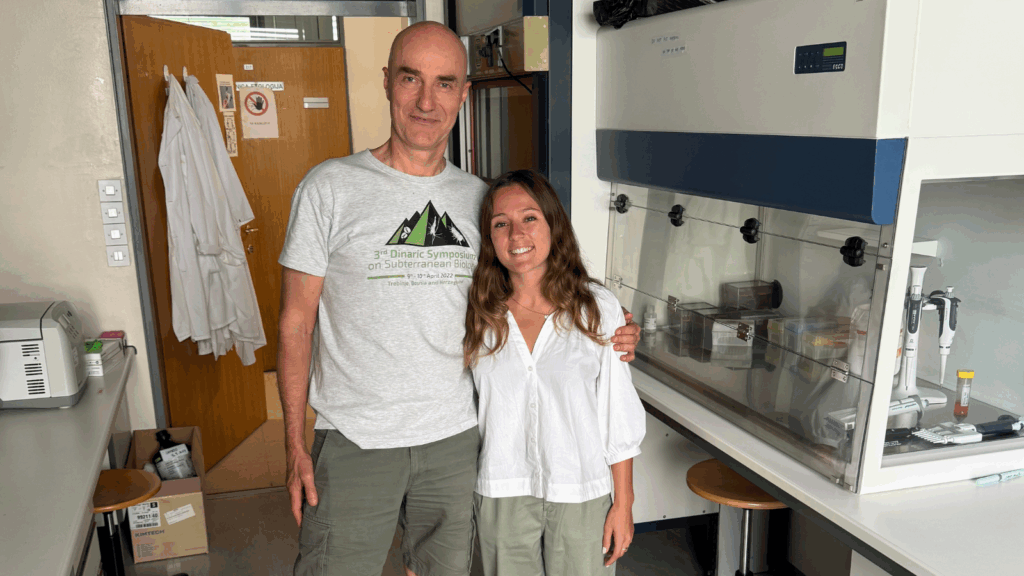
In the following, read her portrait.
An ASEF Fellow’s Perspective: From the Atlantic Coast to the Karst Caves
The identity of Magdalena Eciolaza is a rich tapestry woven across continents – a vibrant blend of the Atlantic coast of Argentina and the Karst heart of Slovenia. A dedicated biology student from Mar del Plata, Eciolaza’s recent ASEF fellowship in Slovenia was more than an academic pursuit; it was a deeply personal homecoming, filling in the “missing pieces” of an identity shaped by two very different worlds.
The Beautiful Complexity of Dual Heritage
“Living in two such different countries has fundamentally shaped my perspective,” Eciolaza explains. The blend of the Latin part with her Slovenian roots made her incredibly open-minded and curious about different cultures from a young age. This dual heritage, she believes, has been a driving force throughout her life.
Her upbringing, centered around the Slovenian community in the small town of Miramar, instilled a profound sense of cultural duty. Eciolaza and her family remain highly involved in the local Slovenski dom, where her aunt is president. She contributes by helping with “social media and designing flyers, which is easier for my generation,” ensuring the traditions like language courses and traditional food workshops continue to thrive.
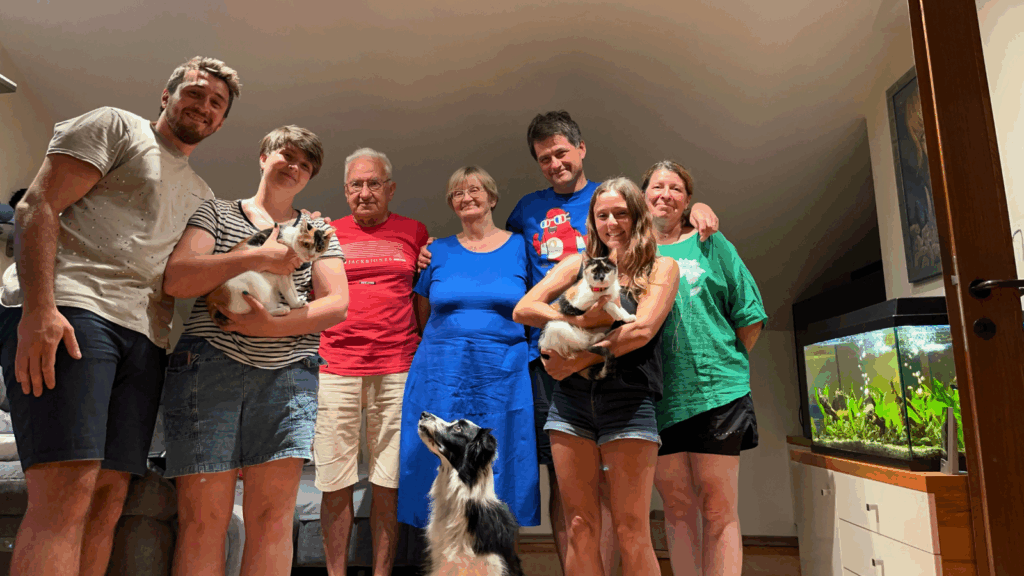
The wisdom passed down from her Slovenian immigrant grandparents forms the bedrock of her values: hard work, humility, and profound respect for immigrants and cultures. “My ancestors were immigrants,” she notes, “and my family always emphasized how hard it is to immigrate to a new country.” These core traits are what she hopes to honor in her future.
Connecting the Dots: A Special Homecoming
Eciolaza’s time in Slovenia offered the emotional climax of meeting her extended family for the first time – a highlight she describes as “one of the most wonderful parts of my trip.” She journeyed to Maribor, Ljubljana, and her grandmother’s charming hometown of Studenec na Blokah.
They were incredibly open, treating me as if we were already super close. It was really nice to see them, get to see where my family is from, and feel those missing pieces of my identity start to fill in.

Even the Slovenian language, which she grew up hearing but never mastered, played a key role. She describes the experience of hearing it spoken by young people as “completely different” from the elders back home. Yet, the small victories were significant. Her great-uncle was “so excited that I was understanding some words and trying to make little chats, which truly helped in connecting the dots.”
From Ocean Dreams to Cave Explorations
Eciolaza’s path to biology was sparked by a simple childhood connection to nature. The “aha moment” came at age 17, when she read a book about an undersea scientist.
That’s when I realized, ‘Oh, you can actually work as a scientist and study nature.’ It was a no-brainer from that moment on.
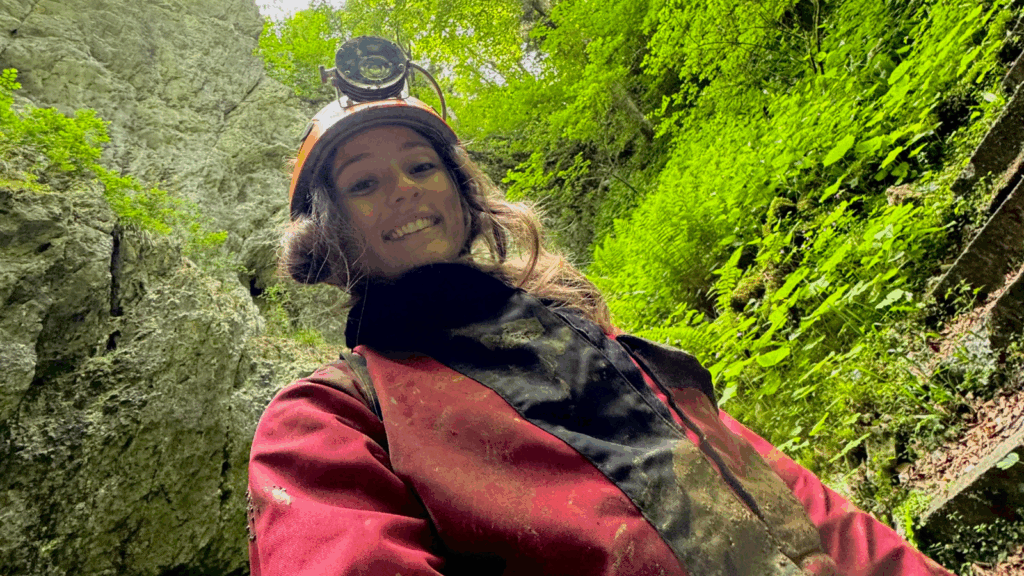
Her academic journey has been deliberately broad, spanning marine, ecological, and molecular biology. She sees this holistic approach as essential for any scientist: “By getting to know a little bit of everything I gain a more holistic and enriching understanding of science, which is often comparative and requires knowledge from different areas.” This broad scope also prepared her for the harsh reality of research: “The most challenging thing I learned was how much you have to deal with frustration,” when experiments don’t yield easy results.
During her fellowship, Eciolaza dove into the specialized field of speleobiology, focusing on the Olm (Proteus anguinus). The work was physically challenging – crawling through cold, damp caves with gear. “The most challenging part was that I had no prior knowledge about amphibians or speleobiology,” she admits. Despite this, she thoroughly enjoyed the fieldwork, which granted her a unique view of the country, showing her “a lot of the country that people don’t usually see, including caves that are not open to the public.” She was also impressed by Slovenia’s commitment to nature, noting that a photograph of the Soča river or a city view showcasing the highly organized recycling system would perfectly capture the country’s sustainability efforts.

Besides working at the Biotechnical Faculty of the University of Ljubljana, Magdalena also engaged in various ASEF activities such as the ASEF Weekend Getaway and the 6th Annual ASEF Fellows’ Picnic.
An Unexpected Warmth and a Lasting Legacy
Looking ahead, Eciolaza is passionate about bridging her two worlds. She dreams of a role in facilitating collaboration between the Argentinian and Slovenian scientific communities. Her main motivation for the ASEF fellowship was always the “perfect mix of my interests and goals,” combining her love for biology and her desire to know her Slovenian roots.
The emotional discoveries were the most profound. She had expected friendliness but was surprised by the “genuinely warm” nature of the Slovenian people. Above all, she found clarity in her grandmother’s memories.
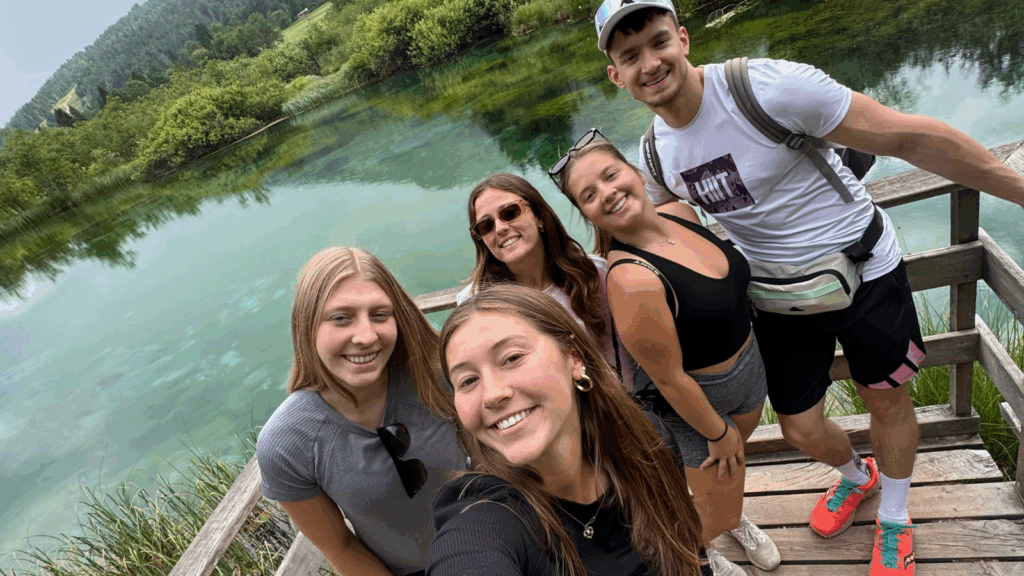
I also desperately wanted to see how green Slovenia is. When I arrived, I was truly shocked by the greenery everywhere – it made perfect sense that it reminded my grandmother of home.
Eciolaza’s final, poignant connection is encapsulated in her favorite Slovenian song Ljubim te, Slovenija zelena from The New Swing Quartet. “When my Slovenian friend translated the lyrics,” she says, “I found it incredibly personal. It truly reflected everything I felt about my connection to the country.”
This deep-seated link extends to her family’s unique legacy in Argentina. She shares the story of her great-uncle, an immigrant who arrived in Miramar at age 17. Coming from Studenec na Blokah, he knew how to ski, but it was the ocean that captured his attention. After seeing a movie, he and his friends built the town’s first surfboard and essentially introduced surfing to the region. “He became a local champion and a surfing legend,” Eciolaza recounts. This legacy is permanently etched into the town’s geography: one of the most famous surfing spots, once called “the pier,” is now officially known as “pomol” – the Slovenian word for ‘pier’ that he taught his friends. The town has a monument dedicated to this story, a powerful symbol of how Slovenian roots can shape Argentine culture. For Magdalena Eciolaza, this blend of scientific inquiry, cultural preservation, and family legend ensures that her life will always be about “connecting the dots” between two cherished homelands.
We are immensely proud of Magdalena and the academic and personal successes she achieved during the ASEF Visit Slovenia program. We extend our best wishes for her continued professional journey and look forward to the possibility of a future reunion.
We also thank the Government Office for Slovenians Abroad and all ASEF donors for supporting the work of ASEF and our Junior Fellows.



